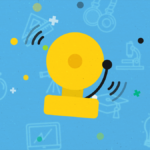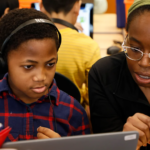Well-Resourced Schools Community Engagement
Summary: SPS is committed to hearing your voice. Read the engagement report to see what our community had to say about SPS well-resourced schools.
A Community Effort to Reimagine our System of Schools
The well-resourced schools community engagement will help shape a vision grounded in the values and aspirations of our diverse community. It represents the community vision of what programs, services, and resources that students need to succeed and thrive in the neighborhoods where they live.
The community vision will provide a foundation to frame challenges and opportunities for the vision for a system of well-resourced schools. It will also guide future strategic planning and resource allocation decisions
Community Feedback Themes
Fall 2023 Phase I Community Feedback Themes
In-person and online community engagement meetings open to all families and community members, internal engagement sessions for school staff, and a districtwide community survey.
Facilities and Learning Spaces
- Neighborhood Location
- Safety, Security, and Retrofitting
- Playgrounds and Athletic Facilities
- Interior Spaces Designed for Learning
- The Library as a Centerpiece
- Artwork Centering Student Diversity
Academic and Extracurricular
- Dedicated, Skilled Educators
- Arts and Music Programs
- Physical Education and Athletics
- High Quality Instruction
- Diversity Reflected in Curriculum and Instruction
Support Services and Resources
- Full-Time Staff in Key Support Positions
- Basic Student Needs
- Mental Health Services
- Special Education/Advanced Learning
- Multilingual Learner Services
- Transportation Services
Spring 2024 Phase II Community Feedback Themes – Students
Districtwide survey open to all high school students and in-person focus groups. A representative total of 528 students provided feedback, including 91 Black students (17%) and 292 Students of Color (55%).
Facilities and Learning Spaces
- Outstanding Library
- Great Facilities for Wide Variety of Athletics and Arts Programs
- Safe, Secure, Well-Maintained Campus
- Welcoming, Open Spaces for Social Gathering, Studying, Relaxing
Academic and Extracurricular
- Well-Funded Arts & Athletics Programs
- After School Enrichment and Clubs
- Highly Effective, Caring Educators who Reflect the Diversity of Students
- Relevant and Challenging Curriculum, including STEM and Advanced Courses
- Tutoring and other Academic Supports
Support Services and Resources
- Full-Time Staff in Key Positions – Librarians, Counselors, Nurses
- Access to Mental Health Services
- Equitable, Highly Responsive Services for IEP/504, MLL, and HC/AL Students
- All Forms of Bullying, Harassment, and Racism Effectively Addressed at School
Spring 2024 Phase II Community Feedback Themes – Adults
In-person focus group with multilingual families, families of students who identify as Black, Native, Latino/x. The group of over 30 attendees reviewed the outcomes of Phase I recommendations and provide feedback on what they wanted to affirm, have the district better understand about their family’s perspective, or name as missing.
Facilities and Learning Spaces
- Generally affirmed broader recommendations from this theme
- Appreciation for artwork and visual displays that represent student work and culture
Academic and Extracurricular
- Desire for more culturally responsive curriculum that represents diversity of student identities
- Desire for more instructors and instructional supports to support student academic growth where’s it needed most
Support Services and Resources
- Families of students receiving special education services named the challenges they faced navigating the IEP system
- Families of students receiving multilingual services named the importance of dual language programs
Superintendent Brent Jones is sharing the plan create a system of well-resourced schools with the SPS community and Seattle School Board.
Learn morePosted: Nov. 16, 2023
Phase I Community Engagement Report
In August through October 2023, Seattle Public Schools completed its Phase I Engagement Plan, which included a series of five (5) in-person and two (2) online community engagement meetings open to all families and community members; internal engagement sessions for school staff; and a districtwide community survey.
Nearly 3,800 community members provided feedback in at least one of these opportunities.
Of survey respondents who provided background information, 63% were family/caregivers, 35% were staff, and 2% were other community members. Whereas 32% of family members/caregivers responding to the survey identified as people of color, the district’s enrollment of students of color is 54%.
Importantly, a Phase II Engagement Plan will include engagement opportunities specifically for students, plus additional targeted efforts to ensure diverse voices from all backgrounds are equitably represented and reflected in the community’s vision.
Read the Well-Resourced Schools: A Community Vision for Seattle Public Schools.
Nov. 15 PresentationBelow are summary points from the Well-Resourced Schools Phase I community engagement.
Part I Feedback Themes
Facilities and Learning Spaces
“I love that Seattle’s neighborhood schools are… the focal point and anchor of their community”
Neighborhood Location
- Close, nearby school connected to neighborhood
- Central hub for families to connect, build community
Modern Facilities, Classic Architecture
- Preservation of historical and classical building elements
- Modern, contemporary design of interior spaces, facilities
Safety, Security, and Retrofitting
- Security measures, gated perimeters, entry procedures
- Retrofitting such as earthquake proofing, updated HVAC
“We love our newly renovated building with earthquake retrofitting and improved ventilation.”
Well-Maintained Grounds and Facilities
- Grounds and facilities well-maintained, preserved with care
- Clean, welcoming environment, sense of community pride
Playgrounds and Athletic Facilities
- School playgrounds, outdoor play areas and athletic fields
- Gym and indoor facilities for athletics and community events
- Modern, accessible for students with disabilities
“Our school’s playgrounds are awesome… ensuring students with disabilities have opportunities for active play and social interaction.”
Natural Spaces and Natural Light
- Natural, open spaces, connections to nature in settings
- Large windows, natural lighting in classrooms and facilities
- School gardens enhance the learning environment for kids
Interior Spaces Designed for Learning
- Purposefully-designed interior spaces conducive to learning
- High ceilings, wide hallways, large classrooms
- Accommodations, accessibility for students with disabilities
The Library as a Centerpiece
- Libraries serve as a hub for learning and community activity
- Thoughtful design and layout of newly renovated libraries
- Abundance of books, materials reflecting school diversity
Artwork and Décor Centering Student Diversity
- Colorful display of student artwork throughout the school
- Murals and inspirational posters reflecting school values and the cultural heritage and diversity of the community
Common Gathering Spaces
- Designated commons areas for building strong community
- Courtyards, atriums, flexible spaces, gym, auditorium, theater
“All spaces showcase student learning, student voices and community values.”
“Our mural that honors the Duwamish is stunning.”
Part 2 Feedback Themes
Academic and Extracurricular Programs
Dedicated, Skilled Educators
- Welcoming, respectful, well-trained and qualified staff
- Caring and nurturing, culturally responsive, collaborative
- Educator resources: curricular, collaboration time, training
High Quality Instruction in Core Academic Subjects
- Well-resourced curriculum and instruction in core academics
- Tools and resources for educators to differentiate instruction
- Additional tutoring and instructional supports for students
Physical Education and Athletics
- Well-resourced athletic teams and sports clubs, P.E. classes
- Structured and unstructured play time for elementary kids
- Inclusive, accessible opportunities for all students
Arts and Music Programs
- Well-resourced programs: Music, Visual and Performing arts
- Integrated into other curricular areas, after-school programs
- Dedicated facilities, full-time staff, multiple choices for kids
We value music and arts programs because when students participate in creative outlets, they do better academically and socially.”
Enrichment and Extracurricular Programs
- Well-resourced extracurricular clubs, enrichment programs
- Before/after school programs also provide childcare support
- Equitable program offerings and resource allocation
Diversity Reflected in Curriculum and Instruction
- Curriculum reflects diversity, is culturally affirming, inclusive
- Ethnic Studies, Black history, non-Eurocentric World History Training for cultural sensitivity, anti-racist teaching practice
“Academic programs that help children excel in the basics like reading, writing, and math are essential for kids to be prepared and successful.”
“Differentiation in reading and math–both to catch up kids who are struggling and to go deeper for kids who quickly grasp the lesson.“
STEM Programs
- Well-resourced courses/programs for science, technology (coding, digital media), and engineering (robotics, biotech)
World Languages and Dual Language Programs
- Learning a second language viewed as educational priority
- Consistent staffing support for multiple language offerings
Project-Based, Experiential Learning Opportunities
- Integrating project-based learning across the curriculum
- Opportunities to develop collaboration, teamwork skills
College and Career Readiness Programs and Resources
- Career and Technical Education, internships, apprenticeships
- Opportunities to earn college credits in high school
Counseling, support for applying to college and financial aid
Part 3 Feedback Themes
Support Services and Resources
“The extra support our son gets from school psychiatrist, educational specialist, and all the dedicated staff that have supported us.“
Full-Time Staff in Key Support Positions
- Full-time counselors, nurses, social workers and librarians
- Adequate educational specialists, interventionists, assistants
Mental Health Services
- Full-time counselors, social workers, mental health specialists Social emotional learning, restorative practices to build emotional resilience, healthy relationships, self-expression
Basic Student Needs
- Free, accessible, fresh and nutritious meals
- Support for students’ clothing, hygiene, medical needs
- Partnering with community-based organizations
“Free breakfast and lunch to make sure no kids are hungry in school.”
Special Education Services
- Fully staffed, well-resourced, easy for families to navigate
- Educator knowledge and training in neurodivergence, trauma informed care, Universal Design for Learning (UDL)
- Collaboration time for specialists, general education teachers
Multilingual Learner Services
- Full-time specialists and instructional assistants who work alongside special education and general education teachers
- Effective translation and interpretation supports for families
Highly Capable/Advanced Learner Services
- Highly capable services; educators trained in differentiation and supporting students who need acceleration, enrichment Advanced Placement, International Baccalaureate, Running Start
Transportation Services
- Consistent, reliable on-time service, clear communications
- Drivers who know how to interact with and support students Equitable access to field trips, expeditionary learning trips
Effective Communications
- Regular, accessible communications to families about services, programs and opportunities available at the school
- Opportunities for families and students to provide feedback to schools and the district about programs and experiences.
“Consistent communication from the school. We do get communications, but they are not always timely and not always easy to find.”
Posted: Oct. 9, 2023
Community Engagement Current Status October 2023
Seattle Public Schools (SPS) is committed to hearing your voice. The goal for the well-resourced schools conversations—as well as the survey—is to gather input from our community so that SPS can make effective decisions about major initiatives and issues.
In August through October 2023, Seattle Public Schools completed a series of five (5) in-person and two (2) online community engagement meetings open to all families, staff, students, and community members; internal engagement sessions for school staff; and a districtwide community survey.
Here is what we know so far:
- No school site consolidations or closures for 2023-24.
- The input gathered from this meeting series and the survey will be compiled and will inform Superintendent Jones’ recommendations for the 2024-25 school year, which he will share with the Seattle School Board in November 2023.
- Families will hear an update on plans for the 2024-25 school year—including consolidation plans, if any—by January, in time for 2024 enrollment.
Early Themes of Feedback Heard
These community conversations are centered around small group discussion of three questions. The questions are:
- What are your favorite things about your school building?
- How do we make resources and services at each school stronger?
- What kinds of programs do you and your student value most and why?
The SPS research team is hard at work analyzing the community feedback. Here are some early themes that have come forward in their work reviewing the community engagement feedback gathered from community meetings and survey.
Engagement Question: What is your favorite part of your school building?
For the first question about what community members appreciate about their school building, we’ve heard most frequently that community members appreciate clean, safe well-maintained schools and grounds, particularly outdoor and natural spaces such as playgrounds, gardens, and fields, as well as natural indoor lighting and common spaces for students and family to gather and build community.
Engagement Question: How do we make resources and services at each school stronger?
For the second question about how community members feel SPS should strengthen services and resources at each school, we’ve heard frequently about the importance of funding full-time support staff like counselors, nurses, and social workers at each school, and providing mental health services in addition to tutoring and other academic supports to accelerate student learning; community members also prioritize expanding key services such as for special education, transportation, and before and after school care, and some have advocated for more equitable redistribution of PTA resources.
Engagement Question: What kinds of programs do you and your student value most and why?
For the third question about what school programming community members value most, we’ve heard most frequently so far about the importance of continuing investments in creative outlets like arts, music, and drama, as well as K-12 athletics and sports programs. Community members value acceleration in reading and math, but also prioritize project-based, hands-on, collaborative learning opportunities, and express advocacy for STEM programs such as computer science and robotics, as well as educational experiences and programming leading to diverse vocational and career pathways.



